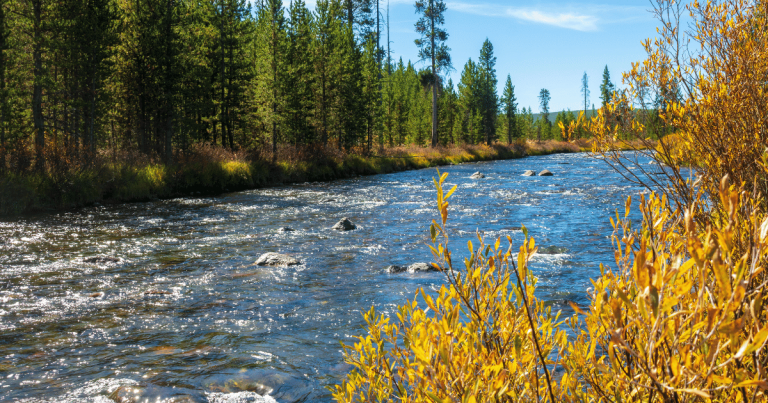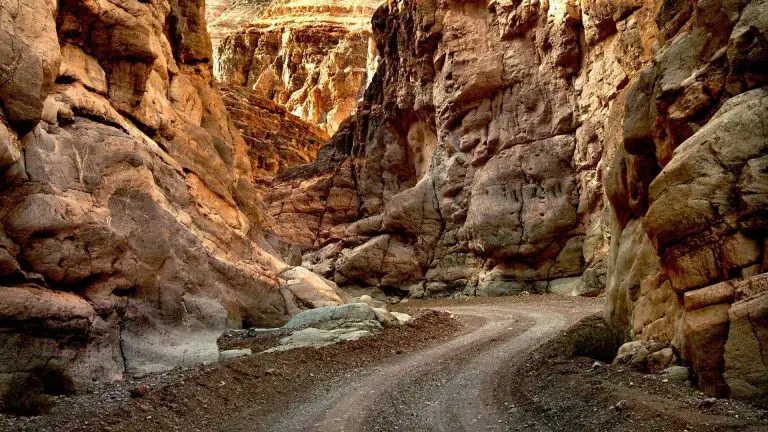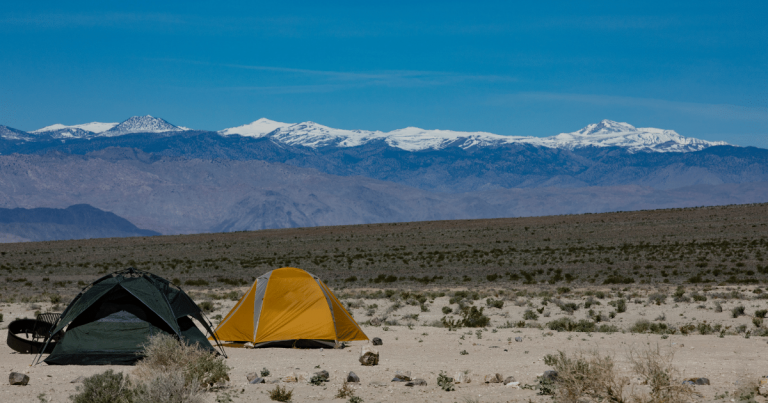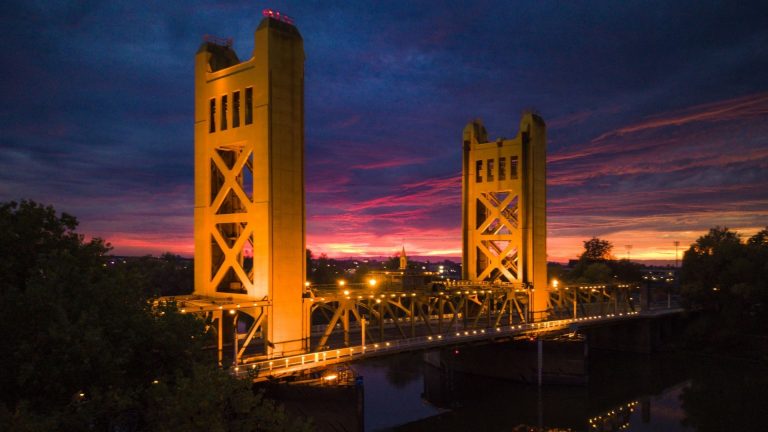A Guide to Dunanda Falls: Everything You Need to Know
Dunanda Falls is a beautiful natural landmark found in the Montana wilderness. It’s located in Yellowstone National Park and is a great place to go if you’re looking for some peace away from your usual routine. The falls have stunning scenery and fascinating backgrounds, making them a must-see destination.

The Geological Marvel
The formation of Dunanda Falls is a testament to the power and beauty of natural geological processes. Over the years, water flows have incessantly carved through the rock, creating this multi-tiered spectacle. Initially, these were tiny rills that steadily progressed into gushing streams and, eventually, the majestic waterfall we see today.
The unique, layered structure of Dunanda Falls directly results from varied erosion rates in different rock types. The hardier rock formations resist erosion and form the overhanging cliffs from which the water plunges, while the softer, more susceptible rocks erode faster, creating the recessed areas below the falls.
Another distinctive feature is the waterfall’s surrounding rock formations. Dunanda Falls is enveloped by a captivating assortment of rocks with diverse mineral compositions, each lending a distinct coloration and texture that contribute significantly to the falls’ visual appeal.
The Journey to Dunanda Falls
Embarking on the journey to Dunanda Falls is an adventure, a thrilling excursion that takes you through some of Yellowstone National Park’s most exquisite wilderness. The primary access to the falls is via a trail that begins near the Bechler Ranger Station. This route, known as the Bechler Meadows-Dunanda Falls trail, is a moderately challenging hike stretching approximately 16.5 miles round trip.
Hikers should expect a full day’s journey, estimated at 7 to 9 hours, depending on individual pace and breaks. The trail meanders through dense forests, open meadows, and along the Boundary Creek, finally leading to the base of the awe-inspiring Dunanda Falls.
The route features a gradual elevation gain, making it manageable for hikers with moderate experience. Transportation to the trailhead primarily includes personal vehicles or park shuttles, with ample parking space near the ranger station. However, during the peak season, arriving early is advisable to secure a spot.

The trail can present a few challenges, especially during the rainy season when parts of the path may become muddy and slippery. However, the most rewarding journeys often have their challenges, and with each step toward Dunanda Falls, the sense of anticipation and wonder only intensifies.
For a safe and enjoyable hike, it’s recommended to wear sturdy hiking boots and carry essentials like water, snacks, a map, a compass, and a first-aid kit. Please remember that the weather in Yellowstone can be unpredictable, so dressing in layers and carrying rain gear is advisable.
Biodiversity and Ecosystem around Dunanda Falls
The ecosystem surrounding Dunanda Falls is a vibrant tapestry of life, hosting a diverse array of flora and fauna. The dense forests that pave the way to the falls are home to many species, from towering lodgepole pines and Douglas firs to wildflowers like lupines and Indian paintbrush, painting a vibrant spectacle of colors across the landscape.In these verdant surroundings, wildlife thrives. Hikers may spot animals like elk, moose, and even the occasional black bear.
Bird enthusiasts will be delighted at the plethora of avian species, including bald eagles, ospreys, and various types of songbirds, each adding their unique notes to the symphony of sounds.The aquatic environment around Dunanda Falls is equally rich, hosting a wide range of species. Boundary Creek, teeming with trout, offers incredible opportunities for anglers. The clear, calm waters also sustain an array of other aquatic life forms, contributing to the area’s biodiversity.
However, as Dunanda Falls grows in popularity, it’s imperative to balance tourism and conservation. The increased foot traffic can stress the ecosystem, so maintaining its delicate ecological balance is crucial.Thankfully, several initiatives are in place to ensure the preservation of the surrounding environment.
Yellowstone National Park adheres to the ‘Leave No Trace’ principles, promoting responsible outdoor activities that minimize human impact. Visitors are urged to stay on designated trails, dispose of waste properly, and avoid feeding or disturbing wildlife.
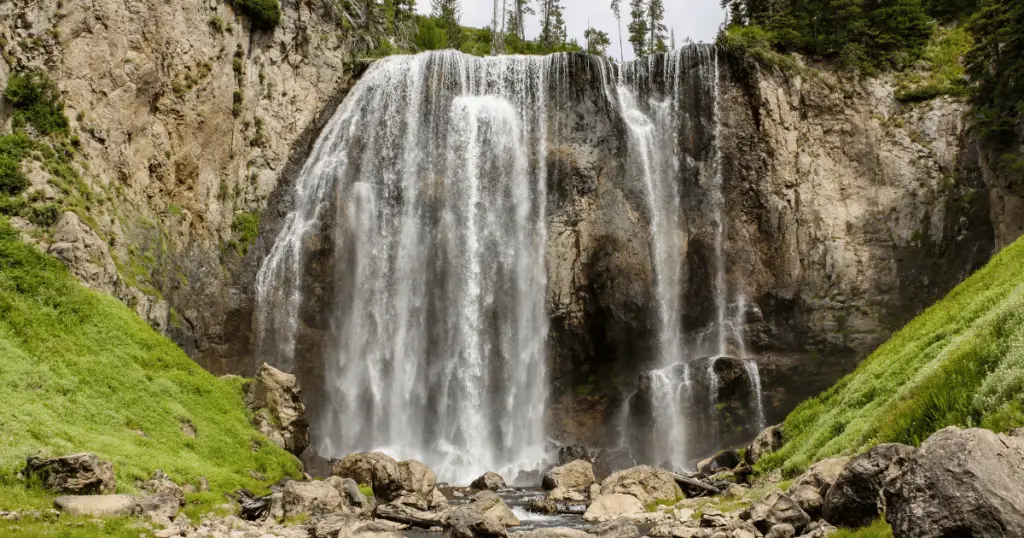
The Enchanting Experience at Dunanda Falls
As you approach the final stretch of the trail, you are greeted by the arresting sight of Dunanda Falls. The first glimpse of the waterfall, seen through a break in the lush greenery, is a moment of pure magic. The cascade tumbles over the rugged cliff, showering the rocks below with a fine spray of glittering droplets.
Closer to the falls, the air is filled with a refreshing mist billowing out from the foot of the waterfall. The vapor produces a beautiful rainbow spectrum when caught in the right light, adding to the ethereal allure of the scene. The gentle hum of the waterfall grows louder, becoming a mighty, rhythmic roar that resonates in your chest – a raw, captivating symphony of nature.
Surrounding Dunanda Falls is an expanse of verdant greenery, the leaves glistening with moisture from the constant spray. The scent of damp earth and fresh foliage hangs heavy in the air, a testament to the life that flourishes in this fertile microcosm.
Responsible Tourism: Safeguarding the Beauty of Dunanda Falls
One of the most significant challenges facing natural wonders like Dunanda Falls is the need to balance the desire to share these magnificent places with others while also preserving them for future generations.
Responsible tourism is the key to achieving this balance. It is not just about enjoyment; it’s also about appreciating the environment, understanding its fragility, and taking steps to minimize our impact.
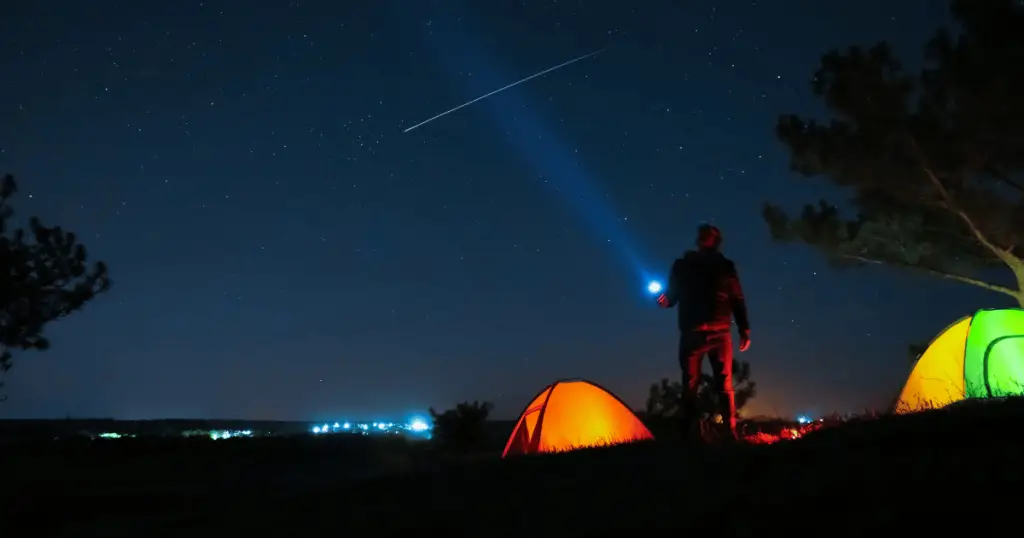
As visitors, we can actively contribute to preserving Dunanda Falls by practicing the ‘Leave No Trace principles. These include disposing of waste properly, not taking or leaving anything except photographs and memories, and sticking to designated trails. Avoiding off-trail excursions helps prevent soil erosion and protects delicate flora and fauna from harm.
Furthermore, respecting wildlife is a crucial aspect of responsible tourism. It’s important to remember that we are guests in their homes. Maintain a safe distance, avoid feeding animals, and refrain from disturbing them. This ensures that wildlife can continue to thrive in their natural habitat. In addition to individual efforts, community initiatives, and partnerships play a vital role in promoting responsible tourism.
The park authorities work hand in hand with several environmental organizations to conduct regular cleanups, restoration projects, and educational campaigns. These efforts help maintain the pristine condition of the falls and its surroundings and foster a culture of respect and stewardship among visitors.
By taking these steps, we can all play our part in preserving the natural beauty and biodiversity of Dunanda Falls. Responsible tourism ensures that the enchanting experience of witnessing the majesty of Dunanda Falls remains accessible to not just us but also our children, our grandchildren, and the many generations to come.
Conclusion: Dunanda Falls
The exquisite beauty of Dunanda Falls, with its vibrant ecosystem and mesmerizing waterfall, is a testament to the wonders of nature we are privileged to witness.
However, this privilege comes with a responsibility to protect and conserve these natural treasures. The ‘Leave No Trace principles and responsible tourism, combined with ongoing conservation efforts, play a pivotal role in safeguarding the Falls and its surroundings.
Each of us can contribute to these efforts and ensure that the enchanting experience of Dunanda Falls continues to captivate and inspire future generations. As we immerse ourselves in the beauty of nature, it’s essential to remember that we are not merely observers but stewards of these earthly treasures.

